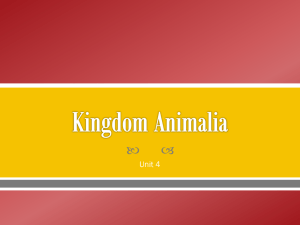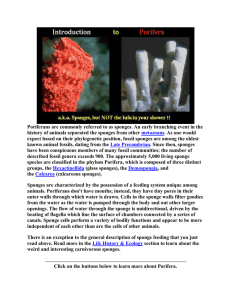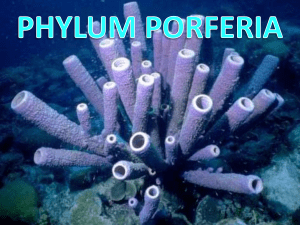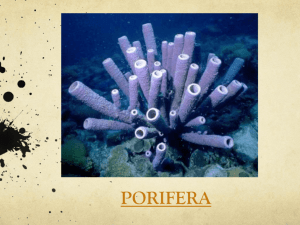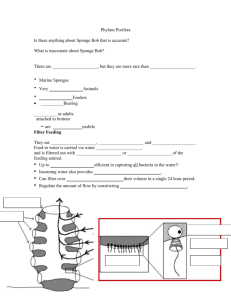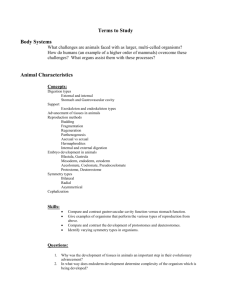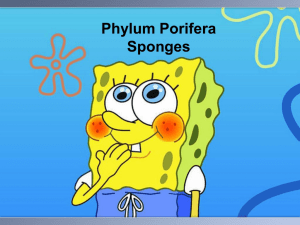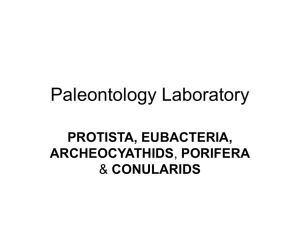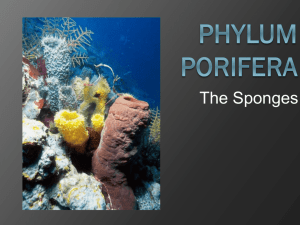Sponges
advertisement
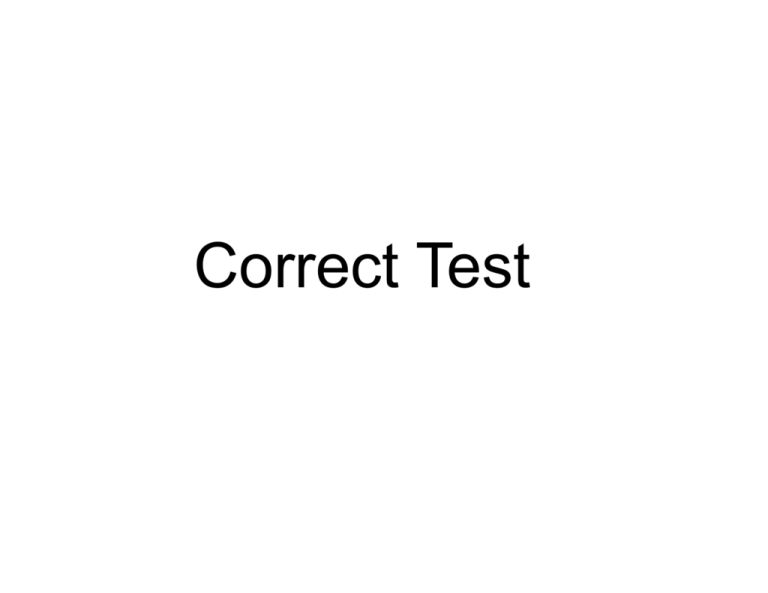
Correct Test Animals What Makes an Animal an Animal? World of Animals Major Phyla.asx Introduction to the Animal Kingdom · Animals are multicellular, eukaryotic heterotrophs whose cells lack cell walls. · Over 95% of all animal species are invertebratesanimals without a backbone, the rest are called vertebrates- animals with a backbone. · Animals carry out the following essential functions: feeding respiration circulation excretion response movement reproduction Figure 26-3 Trends in Animal Evolution Early Development · Animals that reproduce sexually begin life as a zygote, or fertilized egg. · After a series of divisions, it becomes abastula. · The bastula folds in on itself forming a single opening called the blastopore. · The blastopore leads to a central tube that runs the length of the embryo and will become the digestive tract. · This happens two ways: 1) A protostome is an animal whose mouth is formed from the blastospore (most invertebrates) 2) A deuterostome is an animal whose anus is formed from the blastospore (echinoderms and vertebrates) Early Development The cells of most animal embryos differentiate into three layers: · Endoderm: inner layer; lining of digestive and respiratory tracts · Mesoderm: middle layer; muscles, and much of the circulatory, reproductive, and excretory systems · Ectoderm: outer layer; sense organs, nerves, outer layer of skin Body Symmetry · Except for sponges, all animals have some type of symmetry. · Radial symmetry: any number of imaginary planes can be drawn through the centre, dividing the body into equal halves. · Bilateral symmetry: only a single imaginary plane of symmetry can divide the body in half. Cephalization · This is the concentration of sense organs and nerve cells at the front end of the body. Body Cavity Formation · Most animals have a body cavity - a fluid-filled space that lies between the digestive tract and the body wall. · A body cavity is important because it provided space for internal organs to be suspended. · They also allow for specialized regions to develop. Homework: 1. Read p. 657 - 663 2. Section Assessment Questions p. 663 # 1 - 5 http://www.youtube.com/watch?v=wFY_KPFS3LA&feature=aso Sponges (Phylum Porifera) · Sponges are classified as animals because they are multicellular, heterotrophic, have no cell walls and contain a few specialized cells. · "Porifera" means "pore-bearers." Sponges have tiny openings, or pores, all over their bodies. · Sponges are sessile: they spend their entire adult Porifera.asf life attached to one spot. Phylum_Porifera__Sponges__the_Simplest_Animals.asf Form and Function in Sponges · No mouth, gut, organs or tissues. · Simple processes are carried out by a few specialized cells. · Body plan: Assymetrical (no front or back, left or right) · Body forms a wall around a large central cavity through which water circulates. · Choanocytes: specialized cells that use flagella to move a current of water. · Water enters through pores in the body wall, then leaves through the osculum. · Osculum: large hole at the top of the sponge · The movement of water through the sponge provides a simple mechanism for feeding, respiration, circulation and excretion. · Sponges have spicules: spike-shaped structures of hardened material. · Spicules are made by archaeocytes (also called amoebocytes): specialized cells that move around Feeding · Filter feeders: sift microscopic food particles from the water. · Digestion takes place in the cells. · Particles in the water are trapped by choanocytes, and are then digested or passed on by archaeocytes. Respiration, Circulation and Excretion · Rely on movement of water. · Oxygen dissolved in water diffuses into cells. · Carbon dioxide and other wastes diffuse into water and carried away. Homework: Read p. 664 - 667 p. 667 # 1 - 4 Reproduction Sexual: · Single sponge can form both egg and sperm. · Sperm released from one sponge and carried by water to pore of another. · Archaeocytes carry sperm to egg cell. · After fertilization, a larva develops. · Larva: immature stage that looks different from adult form. · Larvae of sponges are motile and carried by water currents. Asexual: · Budding: part of the sponge breaks off, settles to the sea floor and develops into a new sponge. · Gemmules: may be formed under harsh conditions; can eventually grow into a new sponge. 1. Read p. 664 - 667. 2. p. 667 Section Assessment: Questions #1 - 4 3. Figure 26 - 8 p. 665: Sketch in notebook, and label using the correct terms. 4. Handout: Sponge Study Questions. Complete all questions for tomorrow!
